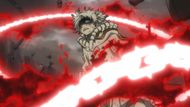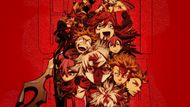When people talk about modern shonen power systems, Gachiakuta often enters the conversation alongside a tug-of-war between complexity and accessibility. Jujutsu Kaisen has layers upon layers of cursed techniques, binding vows, and inherited abilities. Hunter x Hunter’s Nen system is a sprawling web of categories, restrictions, and counter-mechanics.
These intricate structures have their charm, but they also risk alienating casual readers who just want to enjoy the fight without a diagram. At its heart, Gachiakuta’s power system revolves around three core concepts: Thought, Givers, and Vital Instruments.
But those three words only scratch the surface of how the system ties into the world, the fights, and even the personalities of the characters wielding it. The story is split between two places: the Sphere, a floating city where Rudo (our protagonist) grew up, and the Ground, the wasteland beneath it.

The Sphere is pristine and wealthy, but it maintains that perfection by tossing all its garbage down into the Ground. The Ground is a sprawling junkyard filled with toxic heaps, abandoned objects, and lurking dangers.
In Gachiakuta, one of those dangers comes in the form of Trash Beasts. These are monstrous entities born when discarded items accumulate traces of human Thought, a mysterious life force that clings to anything we use, cherish, or even briefly interact with. Over time, if enough discarded objects and leftover thoughts pile together, they coalesce into a Trash Beast.
Trash Beasts are dangerous for two reasons:
- They’re physically destructive, attacking humans on sight.
- They cannot be destroyed by normal means; bullets, explosions, and brute force won’t work because they’re sustained by Thought.
This is where the need for Vital Instruments comes in.
Thought: the invisible lifeblood of the system

Thought is Gachiakuta’s equivalent to chakra, nen, or mana, a universal energy produced by emotions, memories, and human attachment. Anything that humans interact with, even briefly, soaks up small amounts of Thought. Most objects only carry faint traces, but the more personal the bond, the stronger the Thought within.
On the Ground, Thought is more visible and active, which is why Trash Beasts and Vital Instruments exist there. In the Sphere, where the environment is controlled, Thought’s potential goes largely untapped.
The key principle is: only Thought can affect Thought. That’s why conventional weapons fail against Trash Beasts. To fight them, you need a weapon imbued with Thought strong enough to disrupt and destroy theirs.
Givers: the rare channelers of Thought

A Giver is someone who can channel their own Thought into an object they care deeply about, transforming it into a Vital Instrument. This transformation is both emotional and practical: the object retains its physical form but gains unique abilities that reflect the Giver’s personality, values, and experiences.
Becoming a Giver in Gachiakuta requires an Awakening, a moment when one’s bond with an object reaches a certain emotional threshold. This can happen naturally, over years of care and use, or be accelerated if another Giver shares their energy to “jump-start” the process (a risky shortcut reminiscent of forced Nen awakenings in Hunter x Hunter).
For most Givers, this bond is exclusive: they can only have one Vital Instrument in their lifetime. That exclusivity makes the object their greatest strength and biggest vulnerability, lose it, and they lose their ability to fight.
Vital Instruments: weapons with a soul

A Vital Instrument in Gachiakuta is more than a powered-up object; it’s a reflection of the Giver who wields it. The type of care and use the object received before its awakening influences both its abilities and its category.
Vital Instruments fall into two broad types:
- Attacker type: Focused on offense, created from objects the Giver used actively to their fullest potential.
- Defender type: Focused on protection or utility, formed from objects the Giver guarded and maintained rather than pushed to extremes.
The abilities of a Vital Instrument aren’t random; they emerge logically from the Giver’s relationship with the object. For example:
- A well-worn pair of running shoes might grant enhanced speed.
- A cherished umbrella could become a multi-purpose shield or weapon.
- Scissors owned by a hairdresser might transform into deadly precision blades.
Naming and power scaling in Gachiakuta

When a Vital Instrument awakens, it often gains a name etched into its surface. This name is more than cosmetic; it stabilizes the instrument’s form and power. Removing or withholding a name weakens the weapon, which some Givers intentionally do to limit recoil or avoid overwhelming opponents.
The quality of a Vital Instrument in Gachiakuta increases over time as the Giver continues to use, care for, and grow with it. Older, seasoned Vital Instruments often have greater raw power, but skill still matters; a rookie with a legendary weapon won’t automatically outperform an experienced fighter with a modest one.
Final thoughts
In an era where some series risk collapsing under the weight of their own rulebooks, Gachiakuta offers a refreshing alternative. Its power system is clear, character-driven, and visually expressive, yet still leaves room for surprises.
